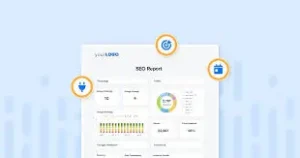Website Redesign in SEO
Steps of Website Redesign;
1. Conduct an SEO Audit Before the Redesign
Before starting the redesign, perform a comprehensive SEO audit of your existing site to identify:
- Top-performing pages: Determine which pages generate the most traffic and conversions.
- Keyword rankings: List keywords for which your site currently ranks well.
- Backlinks: Use tools like Ahrefs or SEMrush to identify pages with high-quality backlinks.
- Technical SEO: Audit your site’s current load speed, crawl errors, and mobile usability.
This baseline data will serve as a benchmark to measure the redesign’s impact.
2. Retain Your Site’s URL Structure
Maintaining your current URL structure as much as possible minimizes disruptions to search engine indexing. If changes are necessary:
- Use 301 redirects to point old URLs to their new versions.
- Avoid 404 errors, as they can negatively impact rankings.
- Create a detailed URL mapping document to track old and new URLs for seamless redirection.
3. Preserve On-Page Optimization
When updating content and design, ensure that on-page SEO elements are carried over:
- Meta titles and descriptions: Retain or refine existing metadata, incorporating target keywords.
- Headings (H1, H2, etc.): Maintain a logical structure that aligns with SEO best practices.
- Alt text: For images, ensure descriptive alt text with relevant keywords is preserved.
4. Create a Backup of Your Existing Website
Before making any changes, back up your current website. This allows you to:
- Restore content in case of unexpected issues.
- Reference old settings for comparison post-redesign.
5. Ensure Mobile-Friendliness
With mobile-first indexing being a priority for search engines like Google, your redesigned website must be fully responsive. Key considerations include:
- Responsive design: Ensure your site adapts to all screen sizes.
- Mobile usability: Test navigation, forms, and call-to-actions on mobile devices.
- Page speed: Optimize images and use caching to improve load times.
6. Optimize Page Speed
Website speed plays a crucial role in SEO rankings and user experience. Use tools like Google PageSpeed Insights to identify and address performance issues. During the redesign:
- Compress images to reduce file size without compromising quality.
- Minify CSS, JavaScript, and HTML files.
- Leverage browser caching and Content Delivery Networks (CDNs).
7. Maintain Backlink Integrity
Losing backlinks can hurt your SEO efforts. To safeguard them:
- Ensure pages with backlinks are redirected correctly using 301 redirects.
- Monitor backlinks through tools like Moz or Ahrefs to identify any drops.
- Inform partners or websites linking to you about potential URL changes.
8. Test the Redesigned Site in a Staging Environment
Before going live, test your redesigned website in a staging environment to:
- Check for broken links or errors.
- Verify redirects and URL mappings.
- Ensure that analytics and tracking tools like Google Analytics and Google Search Console are properly configured.
9. Update Your XML Sitemap and Robots.txt
After the redesign:
- Generate a new XML sitemap that reflects the updated structure.
- Submit the sitemap to Google Search Console and Bing Webmaster Tools.
- Review your robots.txt file to ensure search engines can crawl all important pages.
10. Monitor Performance Post-Launch
Once the redesigned website is live, closely monitor its performance to detect and address issues quickly:
- Traffic and rankings: Use tools like Google Analytics and Google Search Console to track traffic and keyword rankings.
- Crawl errors: Regularly check for errors in Google Search Console.
- Bounce rate: High bounce rates may indicate user experience issues.
- Page speed: Reassess site speed to ensure optimal performance.
11. Communicate Changes to Search Engines
Help search engines adapt to your redesigned site by:
- Resubmitting the updated sitemap.
- Using the “Fetch as Google” feature in Google Search Console to expedite indexing of critical pages.
12. Engage in Ongoing SEO Maintenance
SEO is an ongoing process, and a redesign is just the beginning. Post-launch, focus on:
- Content updates: Regularly update blog posts, product descriptions, and landing pages with fresh, relevant content.
- Technical SEO checks: Conduct periodic audits to identify and fix issues.
- Link-building campaigns: Continue building high-quality backlinks to strengthen your domain authority.
Common Pitfalls to Avoid
- Skipping redirects: Not implementing redirects leads to broken links and lost traffic.
- Changing too much at once: Gradual updates allow for easier identification of issues.
- Ignoring analytics: Failing to track performance post-launch can result in missed opportunities for optimization.
Conclusion
A website redesign is an excellent opportunity to enhance your online presence, but managing SEO effectively is critical to avoiding ranking and traffic losses. By conducting thorough audits, retaining SEO best practices, and monitoring performance post-launch, you can ensure that your redesigned website not only looks great but also performs exceptionally in search results.
Check another post about website redesign in SEO:https://www.seozooms.com/seo-audit-for-e-commerce-website/





